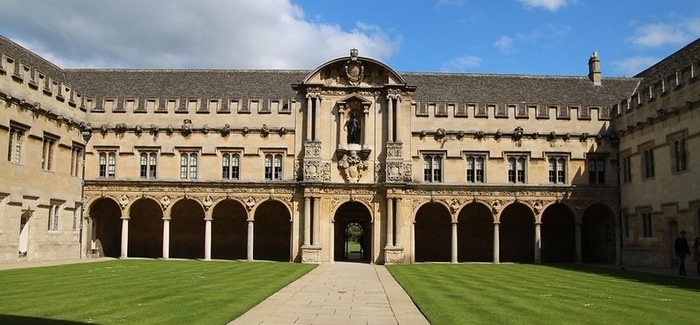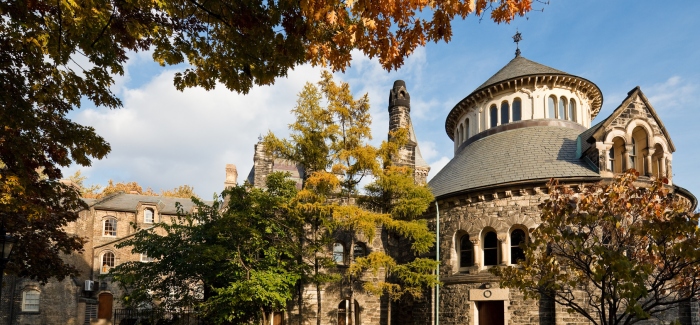Oxford and Cambridge (‘Oxbridge’) are not only the UK’s most famous universities, and two of its highest ranking – they’re also different to other institutions in a number of key ways. Read our quick guide to the main factors that make Oxford and Cambridge so distinct.
1. Colleges
The first key ‘Oxbridge’ element is the college system. Oxford and Cambridge are each made up of colleges – more than 40 at Oxford, more than 30 at Cambridge – and prospective students usually choose a particular college to apply to.
What is an Oxbridge college? It’s basically a collection of buildings, often historic and attractive, which form a small self-enclosed community. Within each college complex you’ll find student accommodation, common rooms, cafes and bars, library and computer facilities (often open 24/7), and offices for staff members.
Most colleges have between 300 and 500 students at a time, usually at both undergraduate and graduate level, studying a broad range of subjects. Depending on the size, there could be as few as one or as many as ten students studying the same subject in each year group.
Students usually live in college in their first year, and may have the option to do so in later years as well. However, it’s also common to spend at least one year ‘living out’ – renting a property privately with friends.
The benefits?
Colleges provide a ready-made community, making it easier for new students to settle in and meet those studying other subjects. Lots of social events are based in and around college communities – and intercollegiate rivalry plays a big role in Oxbridge sports, especially rowing!
In addition to being a social hub, colleges also provide academic support. Students’ primary tutors (academic supervisors) are usually based in the same college, holding tutorials (see below) in their college rooms. More generally as well, colleges provide student support services, covering everything from health to financial assistance.
If this all sounds as though you’ll be trapped within the college walls for three years, be assured that lots happens outside the college too!
Most lectures, labs and larger classes are held in the faculty buildings, which is where you’ll meet students from other colleges studying the same subject as you. And there are plenty of university-wide clubs and societies, open to students from all colleges.
2. Tutorials/ supervisions
The second element that sets Oxford and Cambridge apart is their focus on teaching in very small groups, and even one-on-one. Usually lasting an hour at a time (though some go on much longer), these small-group teaching sessions are known as tutorials in Oxford and supervisions in Cambridge.
The benefits?
Quite simply, few universities can afford this level of contact time, and the regular individual attention means all students should be fully challenged and supported in their academic development.
As you might expect, this also means a particularly intense workload. Depending on the subject, you can expect to have one or two tutorials each week – each requiring a significant amount of preparation. This means that the workload is generally much heavier than at most universities.
For this reason, it’s relatively uncommon to find Oxbridge students with part-time jobs during term-time – there simply isn’t enough time. However, terms are also shorter compared to other UK universities. Each academic year is split into three terms, known as Michaelmas, Hilary and Trinity, of about eight or nine weeks each.
This means nice long holidays in between, which many students use to find temporary work, as well as catching up with studies and taking a well-earned break!
3. Traditions
Finally, we come to the famous Oxbridge traditions. While most universities have their own sets of traditions, Oxford and Cambridge nonetheless stand out for having held on to so many historic – and to the outside observer, often rather bizarre – elements.
One of these is the use of Latin at special ceremonies, such as matriculation (when you officially join the university), graduation, and formal dinners.
These occasions are also characterized by another very distinctive element – the wearing of gowns. Once worn pretty much all the time by members of the university, these are now reserved just for special occasions, sometimes accompanied by...
... ‘Sub fusc’. Another bit of Latin (meaning dark or dusky color), this refers to a formal dress code used in Oxford, requiring students to wear black trousers or skirt, white shirt, and a white bowtie or black ribbon.
Oxford students dress in sub fusc for exams, when you’ll also often see them with a flower pinned to their gowns – a white carnation for the first exam, red for the last, and pink for those in between.
There are lots more Oxbridge traditions – some serious, many silly, and almost all accompanied by special words you won’t hear anywhere else!
The benefits?
Well, at times it may be annoying to have to dress in a certain way or be surrounded by people talking strange Oxbridge jargon. But for most students the quirks and traditions of Oxbridge life are all part of the sense of belonging to a community, and the fun of being a student here.
Image credit (street in Oxford): Pete Spiro/Shutterstock.com















